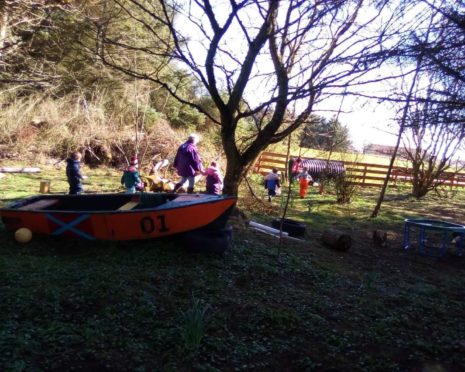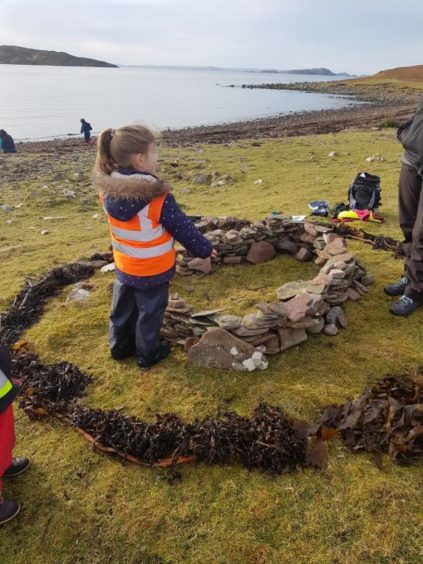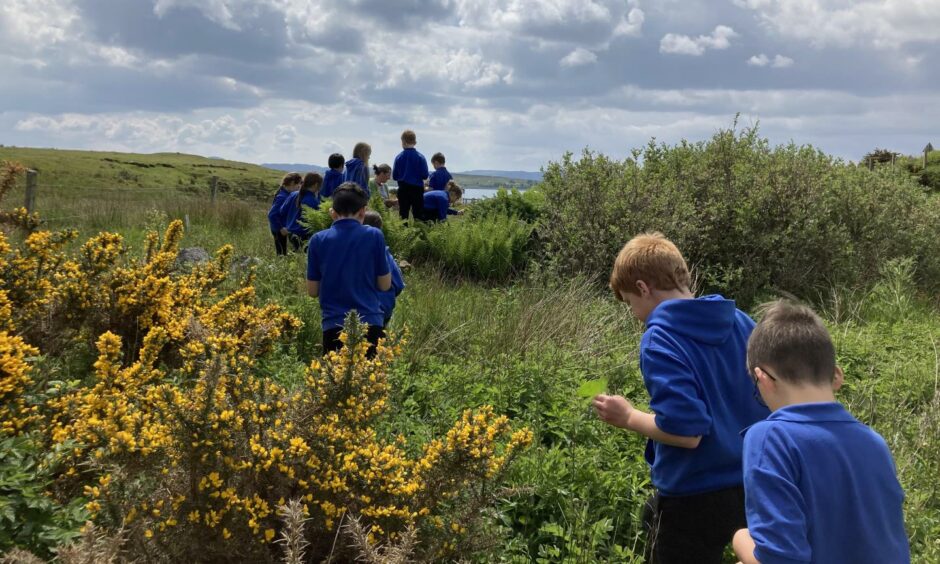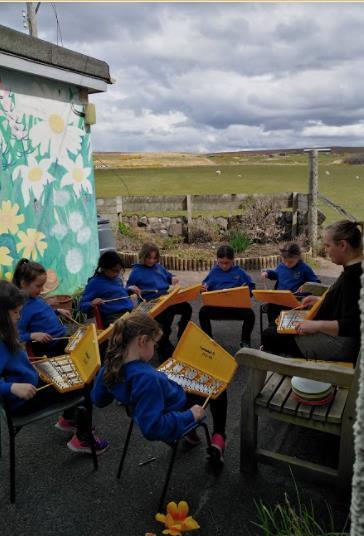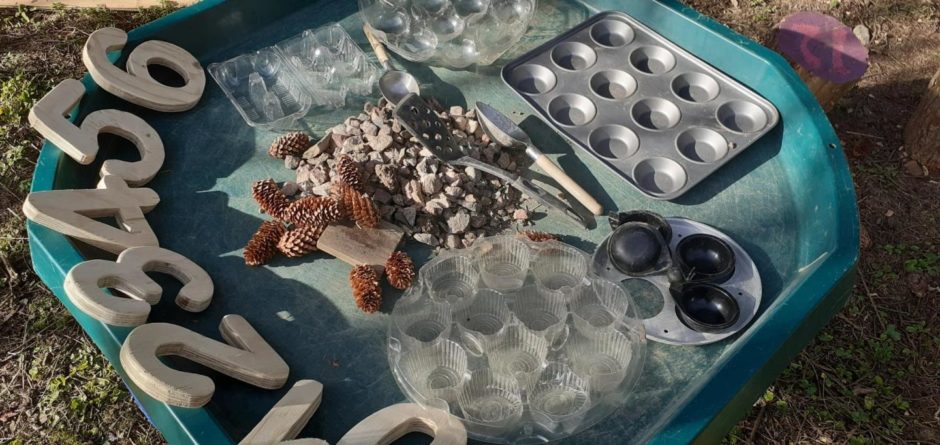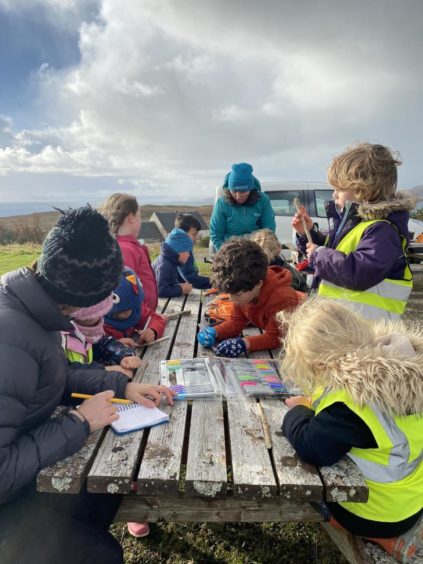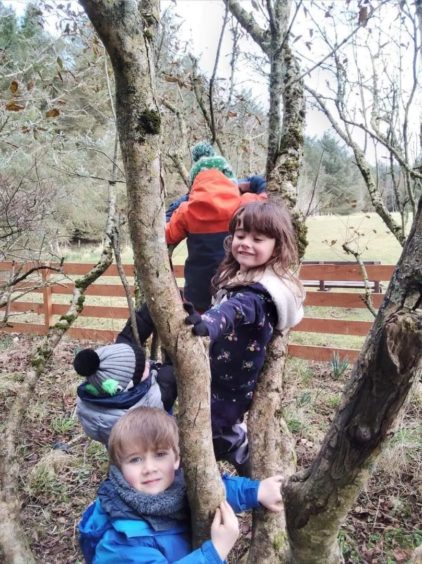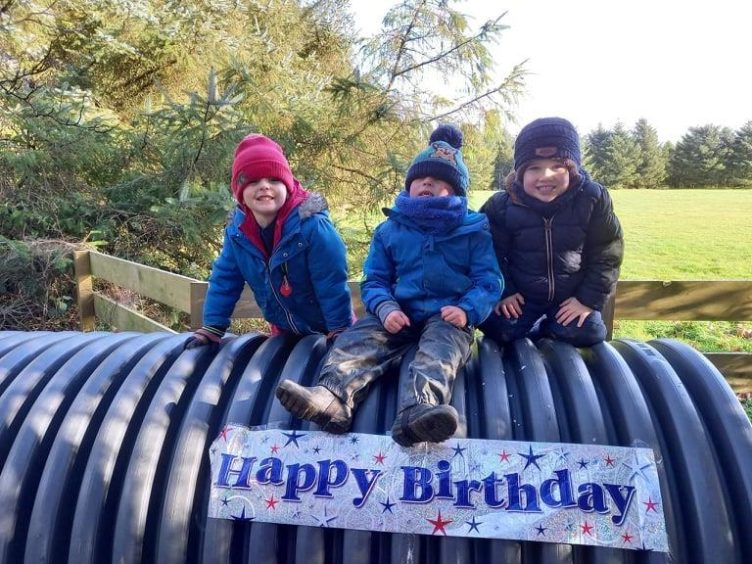Think outdoor learning is just fun in the forest? Think again.
Proponents of outdoor education say it’s one of the most powerful developments in modern education – and it’s transforming the learning experience for our children.
“It’s not all bush craft, dens and marshmallows,” says Colin Masterson, headteacher of Achiltibuie and Lochinver primary schools. “When we’re out in the woods, on the beach, in the moors, we’re developing the curriculum and learning skills in a real life context.”
Achiltibuie and Lochinver are nestled on the remote north west coast of the Highlands. Achiltibuie is surrounded by moorland and close to the seaside, while Lochinver has Loch Culag on three sides and two community woodlands across the road.
“These are really rural communities in spectacular locations so it makes sense to use the natural resources around us,” says Colin.
Outdoor learning is still learning
The schools have enjoyed a five-year partnership with Coigach and Assynt Living Landscapes (see video below), which delivers weekly forest schools.
Unfortunately, the funding for this project is coming to an end, but the organisation has awarded £2k to the schools to train their own woodland activity leaders.
It has embedded outdoor learning even deeper into the daily curriculum.
This video from Coigach and Assynt Living Landscapes shows the scope for outdoor learning.
Within the school grounds, play equipment is replaced with loose parts. Planks of decking, poles, branches and milk crates quickly become a den, a stage or an obstacle course. Children learn teamwork and collaboration skills.
When the learning is taken out to the moors, the magic happens. “Last year, one of the P7 boys at Achiltibuie found a badger sett, which is pretty rare on moorland,” says Colin.
“We set up a camera trap and got photos of the badgers, and went up once a fortnight to monitor them. The children learned all about badgers. They told me they’re a member of the mustelid family, and learned the layout of their teeth and what food they need. I learned things from them that I didn’t even know! Then we recorded a little documentary to camera.”
Climate change was another moorland project that inspired the children. “For World Earth Day we got out on the moors and learned about different landscapes, about peat bogs and how carbon is released. We worked on climate change literacy, understanding the key phrases such as food miles, and how we can all help.”
Community links
Unsurprisingly, climate change is a recurrent theme in outdoor learning. But it’s much broader than simply learning about recycling. It’s about understanding their place in the world.
Further down the west Highland coast, cluster head teacher Natalie White has championed projects that help pupils to connect to their environment.
Natalie leads Pooleweand and Baulnaluib Primaries and Aultbea Nursery, and has fostered strong links with the local community.
One particularly interesting project saw pupils interview their grandparents about their childhood memories of the area.
Natalie believes activities like minnow fishing made the older generation more engaged with the spaces around them.
When pupils learned that their grandparents used to play football in a certain park, it enhanced their connection to the space.
“In the midst of climate change and environmental crisis, we need young people to connect to their environment and want to look after it,” she says. “It builds that love, to see that this is a world you want to be a part of.”
A sense of place
One project that has harnessed that interest is the development of ‘The Spinny’, a community wasteland near the school.
The school has taken ownership of the area and is meeting a local organisation to plan a toolshed and ‘hobbit hole’ on site.
Yet this is not an exercise in adults sending emails, says Natalie.
“The kids are measuring the space, planning sustainable materials and figuring out how to get supplies down there. It’s a big technical project in terms of the design and delivery,” says Natalie. “The kids have ownership of it and so they’re intrinsically motivated to do it.”
It’s part of a growing understanding of place pedagogy in child development. “Home is a child’s first environment, and as they grow older their sense of space increases incrementally,” says Natalie.
“School reflects that. They go to the playground, then local green spaces, then out into the wider countryside and finally through schemes like the Duke of Edinburgh they can even travel internationally. It builds on their sense of security and independence.”
One big family
Indeed, much of outdoor learning is about developing resilience and confidence in young people. Thrumster Primary School in Caithness enjoys an enviable school environment complete with timber trail and multi-use games area, as well as access to the local Yarrows Archaeological Trust and wider estate. Children spend much of their time outdoors, taking part in forest school activities and even architectural digs.
Head teacher Linsey Mackay and outdoor education teacher Lynsey Bremner are unequivocal about the intrinsic value of outside play.
“We have fantastic schools grounds so we do a lot of outdoor learning there, but we also have strong community links,” says Linsey.
“Often people talk about small schools being like one big family but here that sense of family extends to the whole community.”
The floor is lava
Lynsey Bremner takes the two primary school age groups (P1-4 and P5-7) outside for any subject that lends itself to the outdoors – which she happily admits is pretty much every subject.
“There’s a lot of free play, which encourages problem solving, risk assessment and independence, but also applies the curriculum in a real life context,” she says.
For example, den building lends itself to calculating loads, angles and measuring the length and thickness of branches.
A rope assault course played in teams sees classmates assess and then communicate risk, and it fires the imagination as the pupils apply the ever-popular ‘floor is lava’ rule.
“Outdoor learning enhances their enquiry skills, problem solving and team work,” says Linsey Mackay. “It has also helped connect the school to the rest of the village and community. Our pupils are the community members of the future.”
Lynsey Bremner echoes this sentiment. “There’s a massive move towards building children’s relationship to and respect for nature. We’re encouraging them to be the first generation to live a truly sustainable lifestyle.”
We’re getting equity wrong
Outdoor learning also sees children take on different roles in their social group and community. “It draws on their strengths,” says Lynsey Bremner. “Kids who are more practically-minded can show off those skills, so everyone gets a chance to shine.”
Colin Masterson has witnessed the same thing. “Many of the kids who struggle to sit and learn indoors actually assume leadership roles when you take them outside,” he says.
In modern education there’s a growing understanding that sedentary classroom experiences can actually be a barrier to learning. Natalie White makes this point persuasively in reference to a popular cartoon about equity.
“In the picture, the smallest child has the biggest box because he needs it to see over the fence,” says Natalie. “I hate that cartoon. That’s not equity. Equity is removing the fence.”
Meet the Busy Bees
Back up to Caithness, and an innovative outdoor-led nursery has a very similar perspective. Busy Bees nursery in the small village of Bower was on the verge of closure in 2019, with only two children attending.
While Highland Council offered to take the nursery under its management to make it more sustainable, an enterprising group of parents had other ideas.
“We decided that wasn’t the way we wanted to go. We’re a rural setting and being independent of the council gives us a bit more freedom to do something different,” explains Freja Taylor, who is secretary of the committee-led nursery.
“Instead, we’re funded by the council but the committee is led by parents. The staff run the nursery – they’re the stars of the show – and we support them as volunteers. Being part of the committee gives us a powerful voice in our children’s education. You need that investment for people to feel valued and to buy into the vision.”
That vision was to reinvent the nursery as one of Highland’s only outdoor early years settings. It’s been a remarkable success so far, with enrolment up from two in 2019 to 24 today.
Many of those children take split placements because their parents want them to experience the ‘feeder’ nursery for their local primary school but not miss out on the outdoor play at Busy Bees.
Unleashing in nature
Through strong links with the local community council, the nursery has been able to remove the boundary fence to its garden and extend into the neighbouring woodland.
The result is a beautiful natural playground that would make any kid’s eyes light up. “The whole place just sings,” says Freja. “It’s a beautiful space and our kids and families love it.”
While Freja believes classroom environments can feel oppressive for children, she has witnessed the effect that outside learning has had on her own son and his peers.
“Children can be themselves in nature,” she says. “Some children can be loud, boisterous and noisy in the forest in a way they can’t do in a classroom. Others who are more quiet and reserved find their own little spot and observe until they’re ready to join in.
“It lets children be who they are, and there’s freedom in that. Even as adults we go outside to unleash ourselves.
“They also find commonality. Our experience of the material world is not the same but our experience of nature is. The sun warms your skin and a snowflake will feel cold on your tongue.”
Real world value
Bower’s little bees have a vegetable plot which teaches them a wide range of skills. If they’re growing carrots they count out the seeds, measure the depth of the holes, weigh the produce and even sell it at a little community market.
On freezing days they apply science to melt the ground with hot water, and they write stories about the garden creatures. Technical education is designing bird feeders and wind direction gauges.
Most exciting of all, spiritual education includes activities like a Montessori birthday celebration. Children gather in the forest and a candle is lit in the middle of a birthday cake. The birthday child carries a globe around the candle (the sun) with one rotation for each year of their life. It helps children to understand and commemorate the passage of time.
“All of these activities give them a sense of their real world value,” says Freja. “That’s what little people are looking for constantly. If we wrap them up in cotton wool, they don’t learn self reliance. That has a negative impact on their self-esteem and mental health. Outdoor learning helps them to understand the wider world and their place in it.”
And aside from all that, it’s straight-up fun. “Their faces just shine,” says Freja.
More from Schools and Family team
Learning from the best: What lessons can Scottish schools take from Estonia?
First aid, Doric and common sense: What do YOU think should be taught in schools?
Nicky Grant: Why this Highland education boss hung up her football boots for a life in teaching
